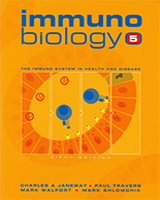From: Infectious agents and how they cause disease

NCBI Bookshelf. A service of the National Library of Medicine, National Institutes of Health.

The mechanisms of damage, representative infectious agents, and the common names of the diseases associated with each are shown. Exotoxins are released by microorganisms and act at the surface of host cells, for example, by binding to receptors. Endotoxins, which are intrinsic components of microbial structure, trigger phagocytes to release cytokines that produce local or systemic symptoms. Many pathogens are cytopathic, directly damaging the cells they infect. Finally, adaptive immune response to the pathogen can generate antigen:antibody complexes that can activate neutrophils and macrophages, antibodies that can cross-react with host tissues, or T cells that kill infected cells. All of these have some potential to damage the host's tissues. In addition, neutrophils, the most abundant cells early in infection, release many proteins and small-molecule inflammatory mediators that both control infection and cause tissue damage (not shown).
From: Infectious agents and how they cause disease

NCBI Bookshelf. A service of the National Library of Medicine, National Institutes of Health.